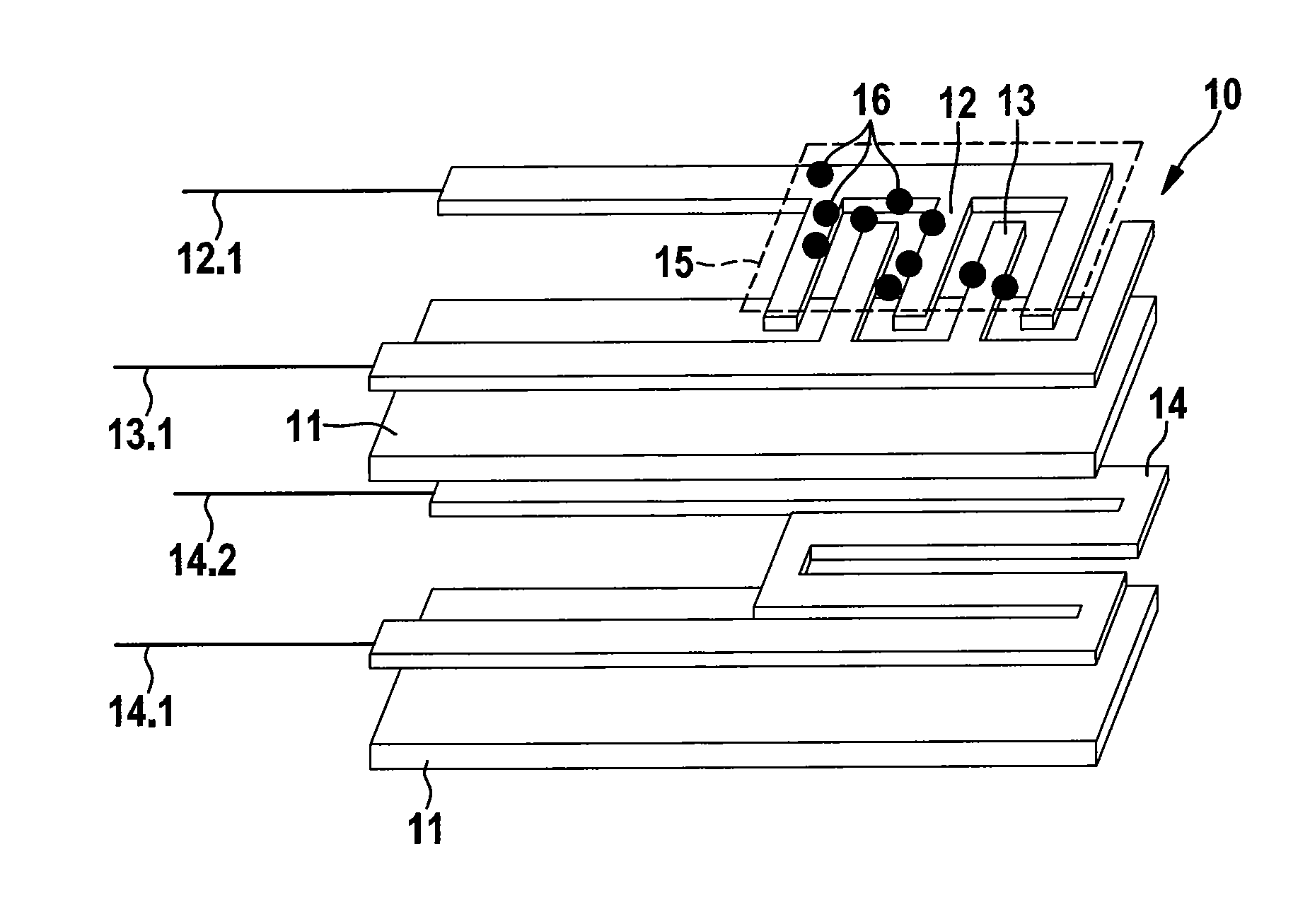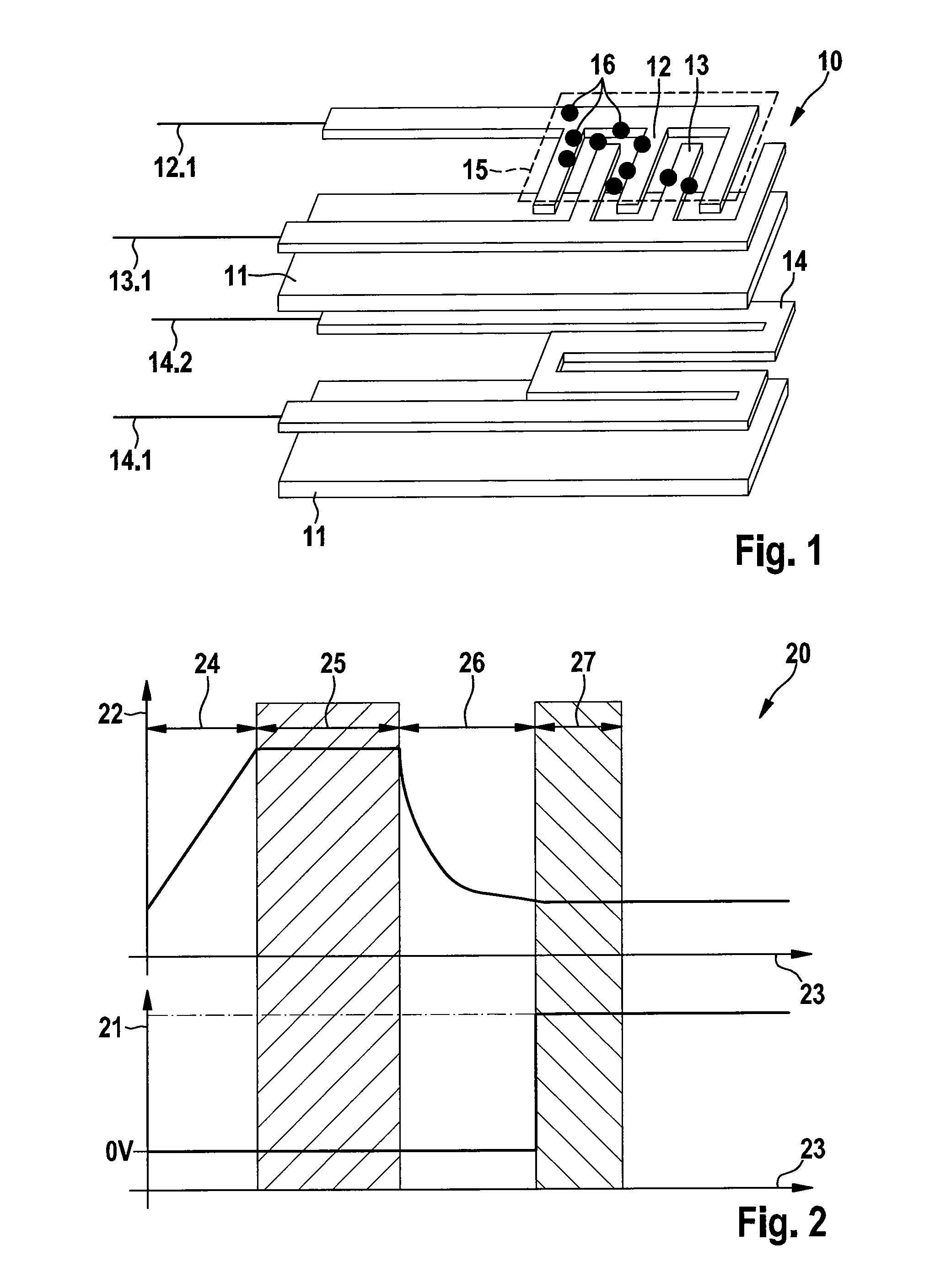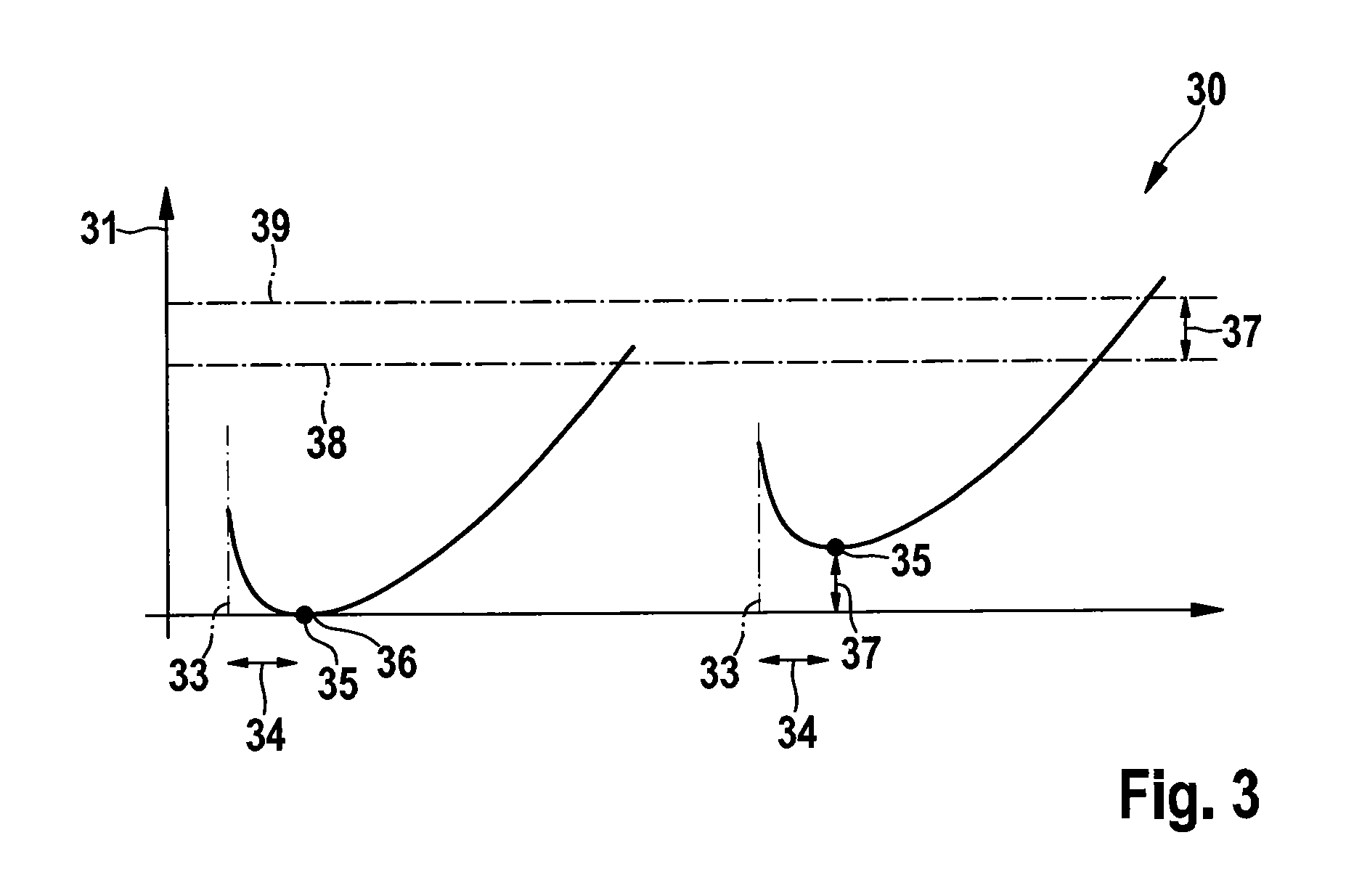Method and device for operating a particle sensor
a particle sensor and sensor element technology, applied in the direction of electrical control, instruments, nuclear elements, etc., can solve the problem of increasing the accumulation rate of particles on the sensor element, and achieve the effect of accurately determining the time of regeneration of the diesel particle filter
- Summary
- Abstract
- Description
- Claims
- Application Information
AI Technical Summary
Benefits of technology
Problems solved by technology
Method used
Image
Examples
Embodiment Construction
[0029]FIG. 1 is a schematic illustration of a particle sensor 10 corresponding to the prior art in an exploded illustration.
[0030]A first electrode 12 and a second electrode 13 are mounted on insulator carrier layers 11, for example made of aluminum oxide. The electrodes 12, 13 are embodied in the form of two inter-digital comb electrodes which are engaged one in the other. A first connection 12.1 and a second connection 13.1, via which the electrodes 12, 13 can be connected to a sensor control unit (not illustrated) in order to supply voltage and to carry out the measurement, are provided at the ends of the electrodes 12, 13.
[0031]In addition, in the example shown a heating element 14, which is connected to the sensor control unit via the connections 14.1, 14.2, is integrated between the insulating carrier layers 11.
[0032]If such a particle sensor 10 is operated in a particle-conducting gas stream, for example in an exhaust gas duct of a diesel engine, the particles from the gas st...
PUM
| Property | Measurement | Unit |
|---|---|---|
| current I(IDE) | aaaaa | aaaaa |
| sensor current I(IDE) | aaaaa | aaaaa |
| temperature | aaaaa | aaaaa |
Abstract
Description
Claims
Application Information
 Login to View More
Login to View More - R&D
- Intellectual Property
- Life Sciences
- Materials
- Tech Scout
- Unparalleled Data Quality
- Higher Quality Content
- 60% Fewer Hallucinations
Browse by: Latest US Patents, China's latest patents, Technical Efficacy Thesaurus, Application Domain, Technology Topic, Popular Technical Reports.
© 2025 PatSnap. All rights reserved.Legal|Privacy policy|Modern Slavery Act Transparency Statement|Sitemap|About US| Contact US: help@patsnap.com



